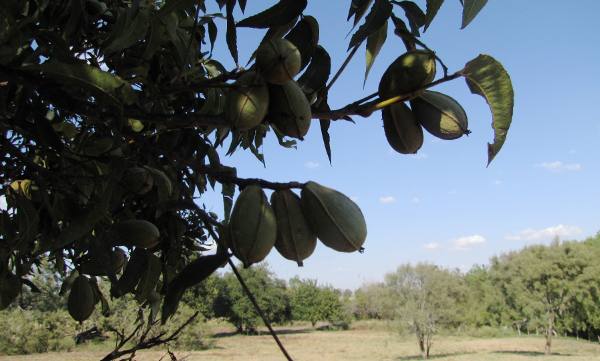October 11, 2012

Despite the drought, the state’s pecan harvest will be exceptionally large this year, a predicted 65 million pounds, according to a Texas A&M AgriLife Extension Service expert.
On an average year, the Texas crop is between 50 million and 55 million pounds, says Dr. Larry Stein, AgriLife Extension horticulture specialist in Uvalde who works mainly with pecans, fruits, grapes and vegetable crops.
“The crop is good, and they seem to be well-filled,” he said. “The quality seems pretty good. The nut size may be a little bit small, but that’s OK.”
The high yields and big crop are both good and bad news for growers, Stein noted.
The good news is this year is a great improvement over the 2011 crop, which, because of the drought, was less than half the average, driving up prices to the consumer. On the negative side, the big crop may drive down wholesale prices for growers, and the large nut set is resulting in a lot of limb breakage throughout the state.
“We’re probably seeing more limbs breaking (in orchards) than not,” he said. “Most years, you have enough insect pressure that will take some of the nutlets off before they set. In 2012, the crop was large enough, and the insect pressure was so dispersed, that a lot of trees that would not ordinarily set that many pecans, set an overabundance. As the nuts fill, the combined weight of the leaves and nuts is breaking limbs.”
Monte Nesbitt, AgriLife Extension horticulture specialist, College Station, said the excess fruit production was a direct result of the drought continuing into the early growing season.
When stressed, a pecan tree will form more fruit in an attempt to make sure the species is preserved, Nesbitt said. The late-season rains also contributed to the large survival rate of the nutlets and resulting limb breakage.
“Commercially, what we’ll do is trunk-shake in mid- to late-July and take some of the nuts off,” Stein said. “What a homeowner should have done is to take a stick out there and knock some of the nuts off.”
But untrained, non-commercial growers typically think more nuts are better, Stein said, and leave all the nutlets to set—to the tree’s detriment.
More information on the current Texas drought and wildfire alerts can be found on the AgriLife Extension Agricultural Drought Task Force website at http://agrilife.tamu.edu/drought/.
You May Also Like




